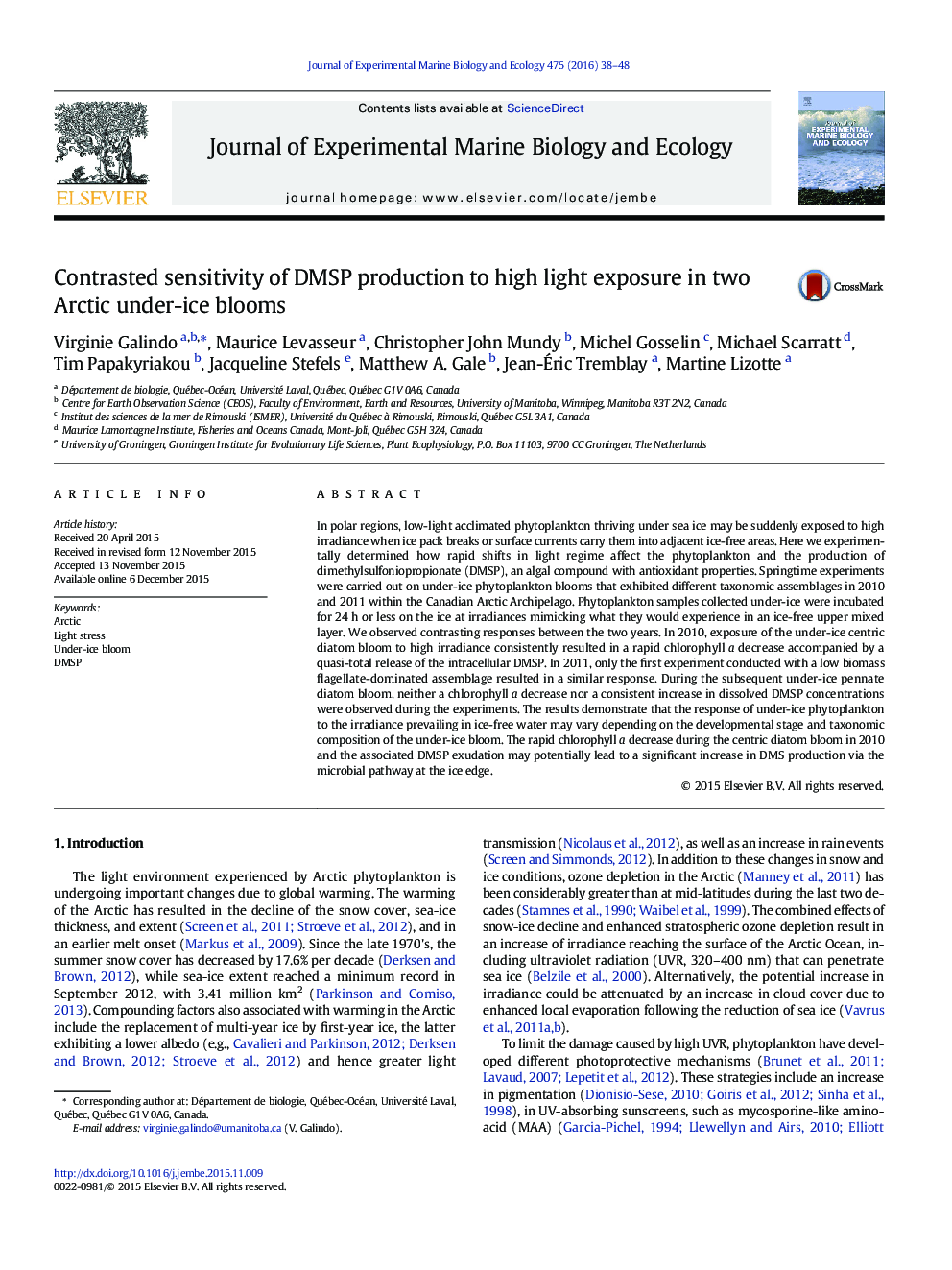| Article ID | Journal | Published Year | Pages | File Type |
|---|---|---|---|---|
| 4395277 | Journal of Experimental Marine Biology and Ecology | 2016 | 11 Pages |
•Contrasted sensitivity to high irradiance of under-ice blooms.•Exposure of under-ice blooms to high irradiance may have different impacts on their DMSP dynamics.•Centric diatoms under-ice bloom are highly sensitive to an abrupt increase in irradiance.•Pennate diatoms under-ice bloom are resistant to high irradiance.
In polar regions, low-light acclimated phytoplankton thriving under sea ice may be suddenly exposed to high irradiance when ice pack breaks or surface currents carry them into adjacent ice-free areas. Here we experimentally determined how rapid shifts in light regime affect the phytoplankton and the production of dimethylsulfoniopropionate (DMSP), an algal compound with antioxidant properties. Springtime experiments were carried out on under-ice phytoplankton blooms that exhibited different taxonomic assemblages in 2010 and 2011 within the Canadian Arctic Archipelago. Phytoplankton samples collected under-ice were incubated for 24 h or less on the ice at irradiances mimicking what they would experience in an ice-free upper mixed layer. We observed contrasting responses between the two years. In 2010, exposure of the under-ice centric diatom bloom to high irradiance consistently resulted in a rapid chlorophyll a decrease accompanied by a quasi-total release of the intracellular DMSP. In 2011, only the first experiment conducted with a low biomass flagellate-dominated assemblage resulted in a similar response. During the subsequent under-ice pennate diatom bloom, neither a chlorophyll a decrease nor a consistent increase in dissolved DMSP concentrations were observed during the experiments. The results demonstrate that the response of under-ice phytoplankton to the irradiance prevailing in ice-free water may vary depending on the developmental stage and taxonomic composition of the under-ice bloom. The rapid chlorophyll a decrease during the centric diatom bloom in 2010 and the associated DMSP exudation may potentially lead to a significant increase in DMS production via the microbial pathway at the ice edge.
